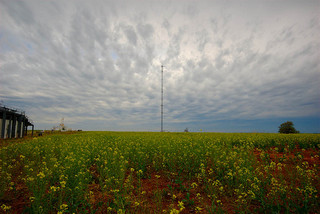ARM Facility Embarks on Expansion in the United States
Published: 21 January 2014

- Southern Great Plains—measurements at the SGP site in Oklahoma will be augmented to include additional scanning and profiling remote sensors and more detailed measurements of the land-atmosphere interface.
- North Slope of Alaska—aerial operations will link measurements from Barrow and Oliktok, and unmanned aerial systems will provide additional spatial information around Oliktok.
To support the expansion of the continental U.S. site in Oklahoma, operations at ARM sites in the Tropical Western Pacific (TWP) will end in 2014. Data obtained from these sites will remain available to the scientific community through the ARM Data Archive to support continuing research in tropical climate. Future observations in the tropics or other climate regimes will continue to be supported through deployments of the ARM Mobile Facilities via the selection of field campaigns proposed by the science community. This reconfiguration does not affect operations of the new ARM site in the Azores or the mobile facilities.
ARM leadership will work with the science community in the coming year to optimize this new measurement strategy, with the continued goal of improving the understanding of atmospheric processes and the representation of those processes in climate models.
The ARM Climate Research Facility is a DOE Office of Science user facility. The ARM Facility is operated by nine DOE national laboratories, including .
Keep up with the Atmospheric Observer
Updates on ARM news, events, and opportunities delivered to your inbox
ARM User Profile
ARM welcomes users from all institutions and nations. A free ARM user account is needed to access ARM data.


















